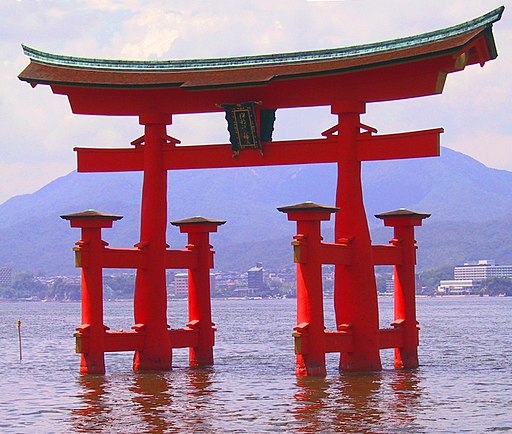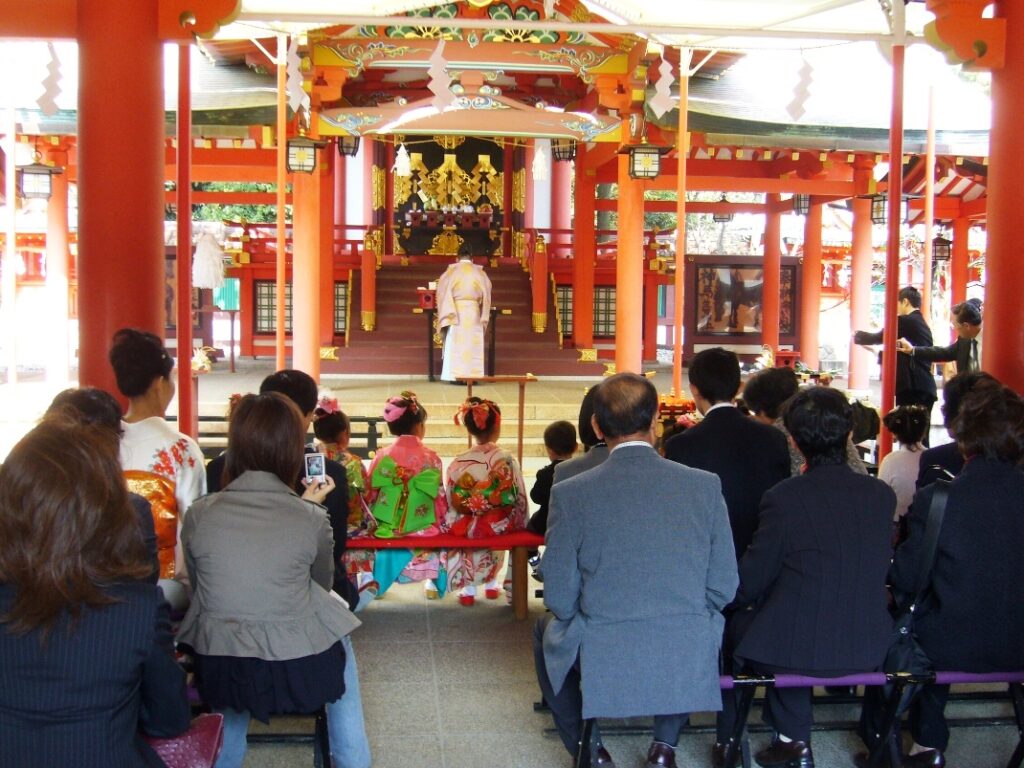Religion in Japan: Shinto and Buddhism
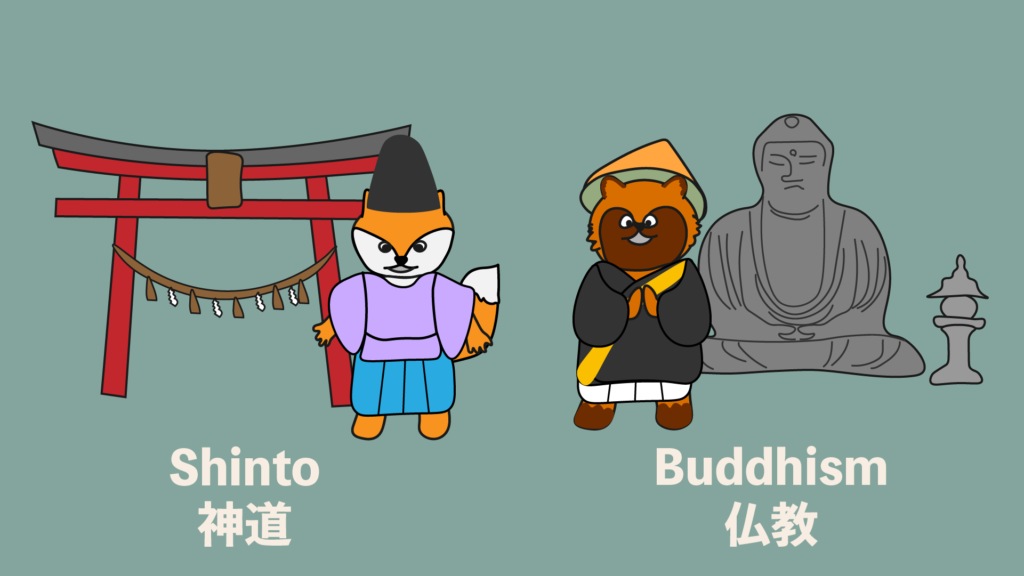
Many people might wonder about religion in Japan, a country full of temples and shrines! What’s unique about Japanese culture is that the idea of religion, where you follow one specific religious group, is not common. Instead, people tend to follow the practices of both Shinto and Buddhism (the two major Japanese religions).
Over time, these practices have turned into more of a cultural tradition than something tied specifically to the religion itself.
What is Shinto?
Shinto is a religion originating from ancient Japan, which worships kami or gods. These gods are closely related to nature, such as the amaterasu oomikami (sun goddess), Fuujin (god of wind), Susanoo no mikoto (god of the sea and storms), and many others. Each Shinto Shrine dedicates to different kami.
In general, Shinto is a religion that doesn’t have to be exclusively or regularly practiced. Throughout Japanese history, it has been able to coexist alongside Buddhism.
What is Buddhism?
More than half of the Japanese population practice Buddhism to some extent. This is similar to the numbers practicing Shinto, and many people practice both.
Buddhism is a religion which originated in India and it is about reaching enlightenment instead of worshiping god(s). It’s more of a way of life and spiritual practice, which is why it can work well with a religion like Shinto. In the mid 500s a Korean King officially introduced Buddhism to Japan and it began to grow in popularity.
What is the difference between an Otera (temple) and Jinja (shrine)?
You can find Otera and Jinja all over Japan, and it can be confusing to know the difference between the two. This is because Buddhism encouraged the idea of building places of worship, and this seeped into the Shinto practices. Many Shinto shrines and Buddhist temples share similarities.
Jinja (Shinto Shrine)
A unique feature of the jinja, or Shinto shrine, it the gate called torii. Two vertical pillars and horizontal pieces make up the torii gate (see picture below). These are used to mark the entryway into a sacred place. Inside a Jinja, there is also a place to wash your hands and mouth before going to worship. When worshiping you will usually make an offering by throwing a coin, then ring a bell to call the attention of the kami, or god(s), bow twice, clap twice, make your prayer, and bow again.
Rdsmith4, CC BY-SA 2.5 <https://creativecommons.org/licenses/by-sa/2.5>, via Wikimedia Commons
Otera (Buddhist Temple)
An otera is a Buddhist temple. Unlike a Jinja, there are no torii gates but some may have the place to wash your hands and mouth. The gates of an otera are called sanmon, a very large with a roof-like structure on top (see picture below).
When worshiping at an otera, there is no clapping. Instead you should make an offering, ring the gong, and pray with your hands together. Also, unlike the jinja or shrine, they always have a statue of buddha and many also have incense.
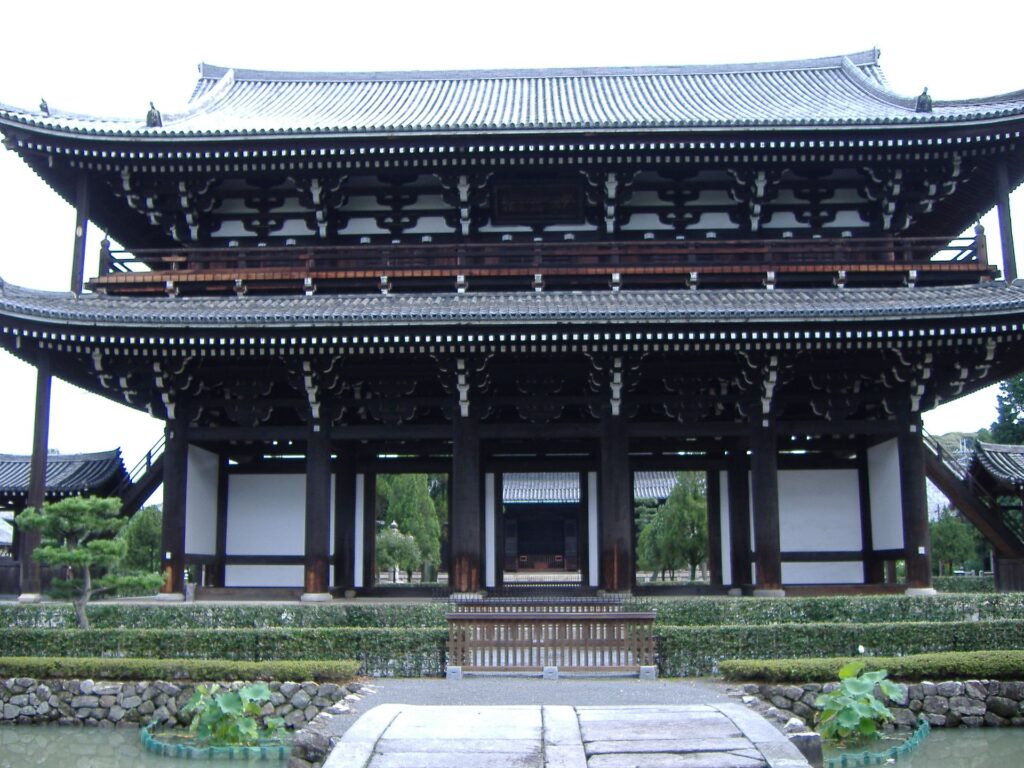
Japanese Shinto and Buddhist Traditions
Japanese people incorporate both Shinto and Buddhist traditions in their daily lives. These are more like cultural traditions with the religious roots of Shinto and Buddhism.
Shinto Traditions
Weddings
If couples choose to have a Japanese-style wedding ceremony, they will have them at a Shinto shrine. It includes a ritual meant for purification where the couple will exchange sake.
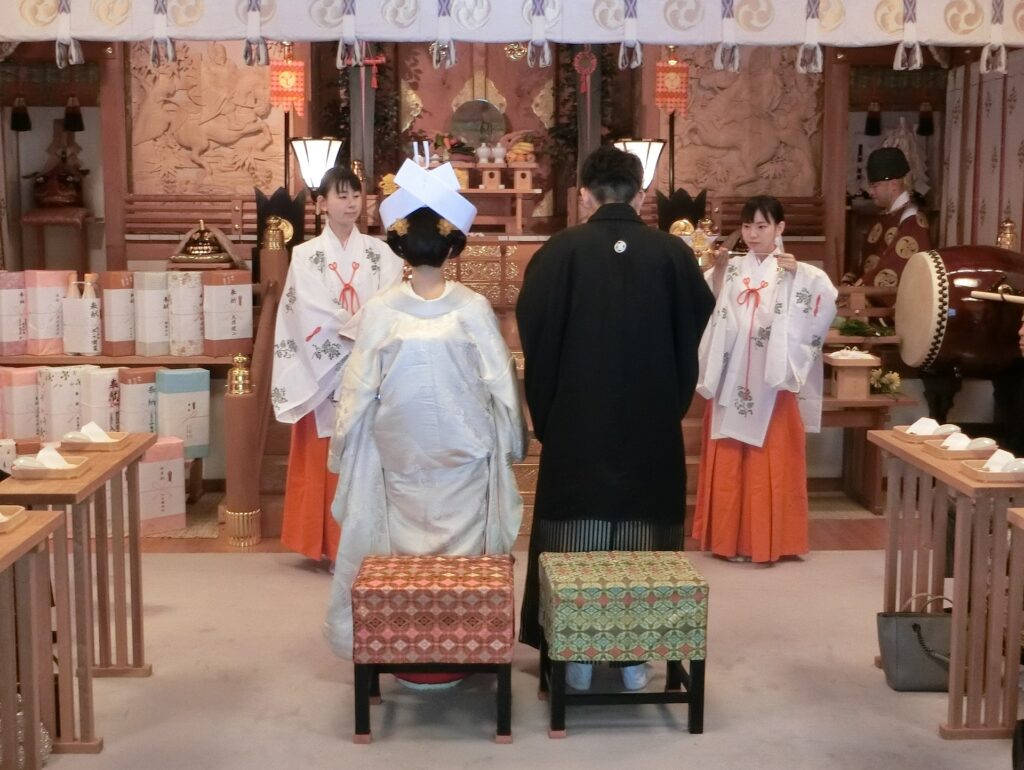
Shinto Festivals
Different Shinto shrines hold various festivals or matsuri throughout the year. These are activities which celebrate different gods, with parades, dancing, and outdoor food vendors.
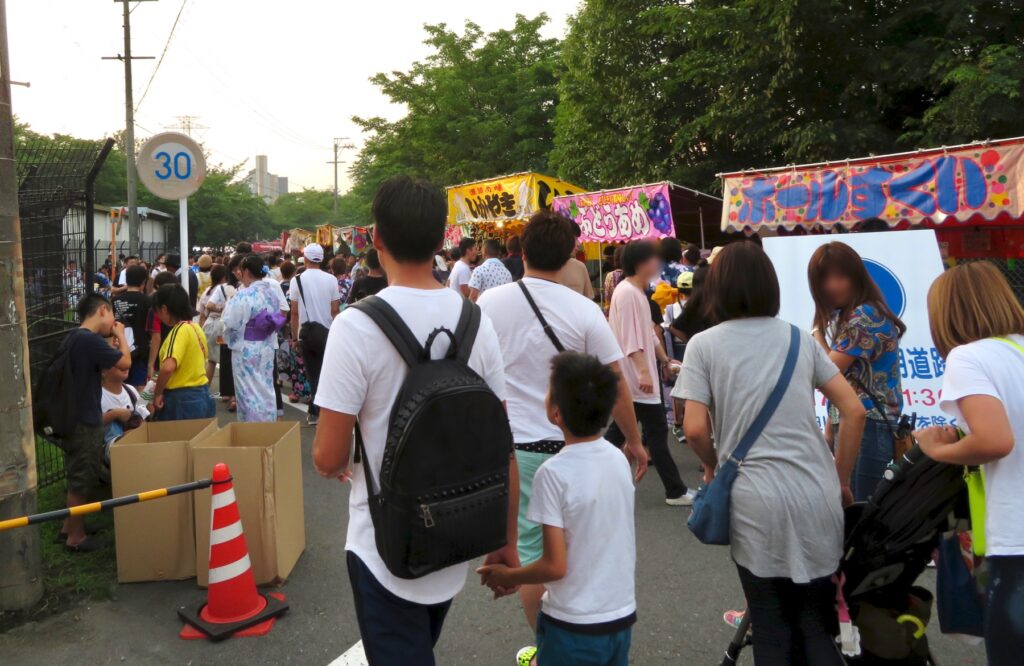
Hatsumoude (New Years)
Traditionally, the first place Japanese people visit during New Years is the Shinto shrine. During the New Years shrine visit, called hatsumoude, you can make a wish or hope for the year. These days it is also common to go to Buddhist temples for hatsumoude.
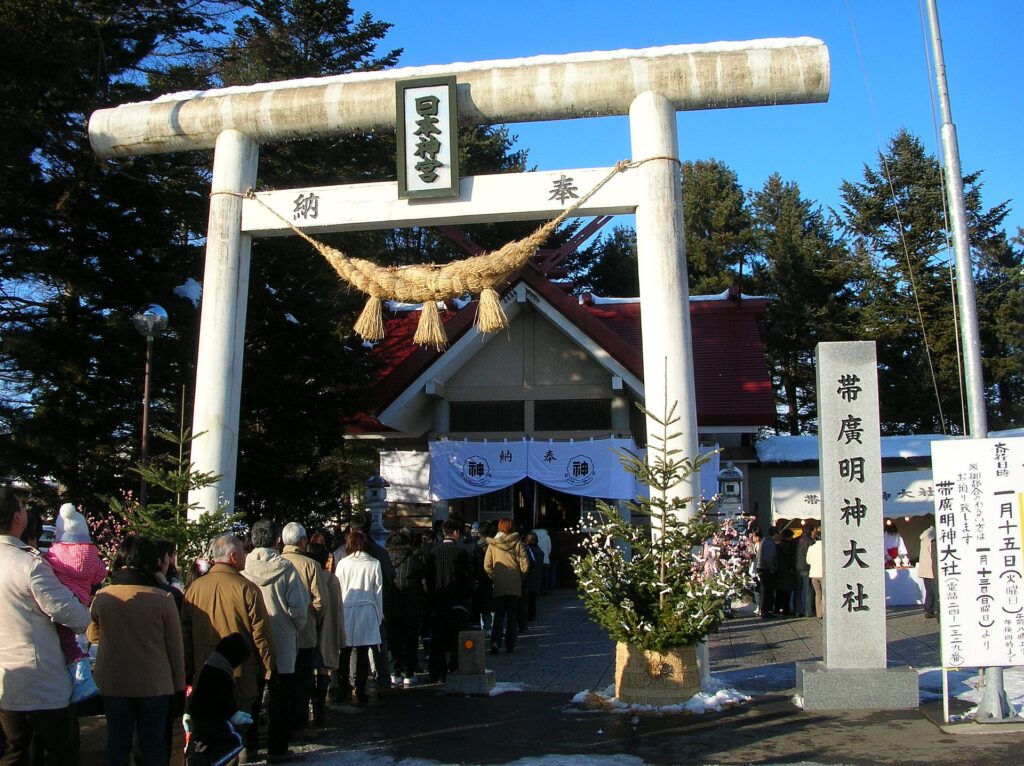
Kamidana
Kamidana (literal translation is “god shelf”) is an altar for the Shinto gods that are placed up high on the wall. They are used to make offerings and prayers to the Shinto gods. Homes and businesses will place kamidana inside for good luck.
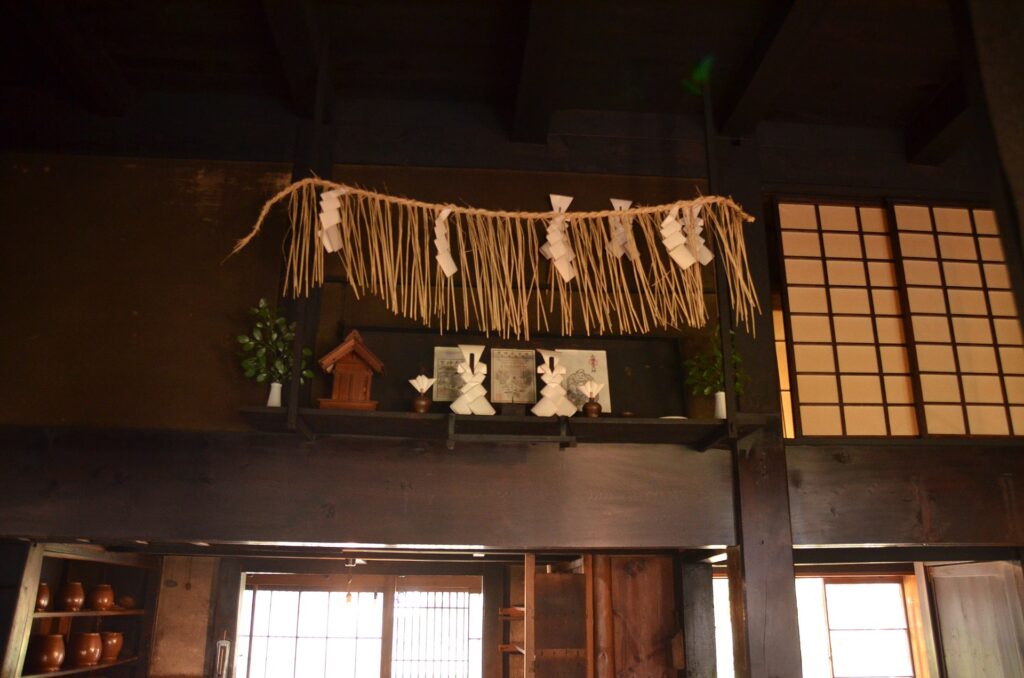
Omiyamairi/Shichigosan
An important tradition in Japan is for children to go to the Shinto shrine. One month after a child is born, they go to the shrine for the first time, called omiyamairi. When boys turn 3 and 5, and girls turn 3 and 7, they also go to the shrine wearing traditional clothes for an annual celebration called shichigosan (translating to “seven five three”). This was to wish for longevity. In the past, it was a big milestone for children to survive until those ages.
Buddhist Traditions
New Years Eve Bell (joya no kane)
The bells which start ringing from New Years eve, called Joya no Kane, are from the Buddhist temple. Although many people will visit the Shinto shrine on New Years they will also celebrate the ringing of the bell from the Buddhist temples, starting around an hour before midnight.
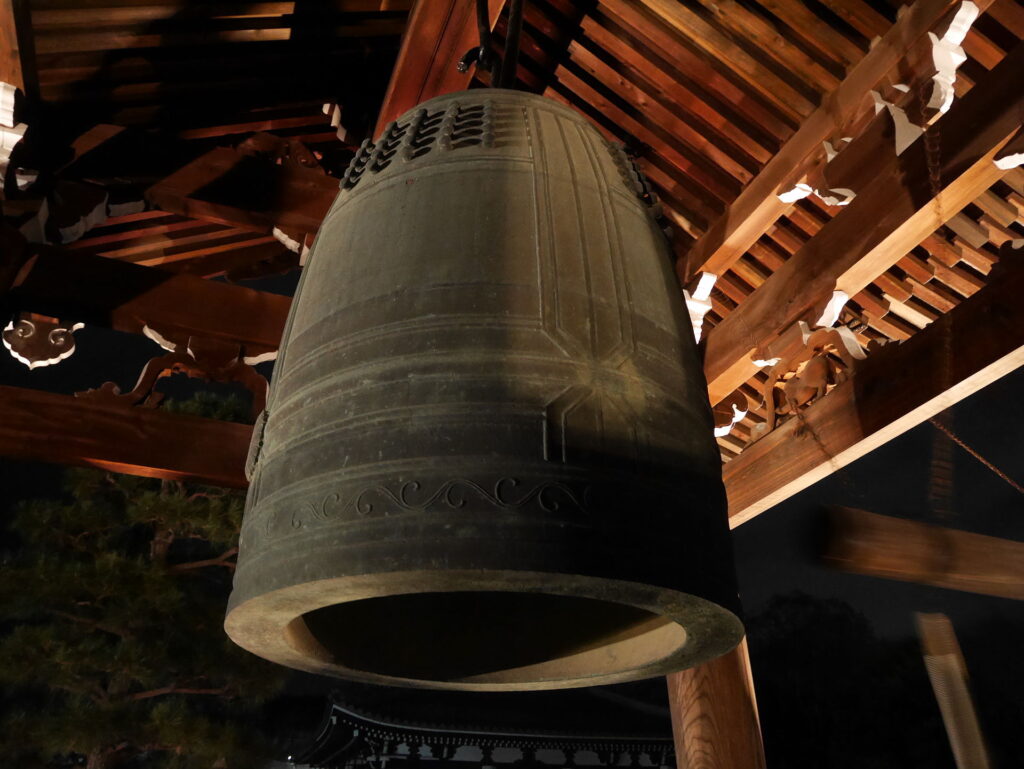
Funerals
When someone dies, funerals are usually held in the Buddhist tradition. Over 90 percent of funerals in Japan are Buddhist. These are held at a temple and the body is cremated before being buried.
katorisi, CC BY 3.0 <https://creativecommons.org/licenses/by/3.0>, via Wikimedia Commons
Butsudan
Since death is usually associated with Buddhism, many families have a butsudan in their homes. These are Buddhist altars which can allow people to pray and make offerings to Buddha and their deceased ancestors.
Corpse Reviver, CC BY 3.0 <https://creativecommons.org/licenses/by/3.0>, via Wikimedia Commons
Bon festival
Just like Shinto festivals, Buddhist festivals are also an important part of Japanese culture. One of the biggest festivals of the year is the Bon festival, during August. People believe that the ancestor’s spirits return during this time. Many people will return to their hometowns in order to visit their relatives.
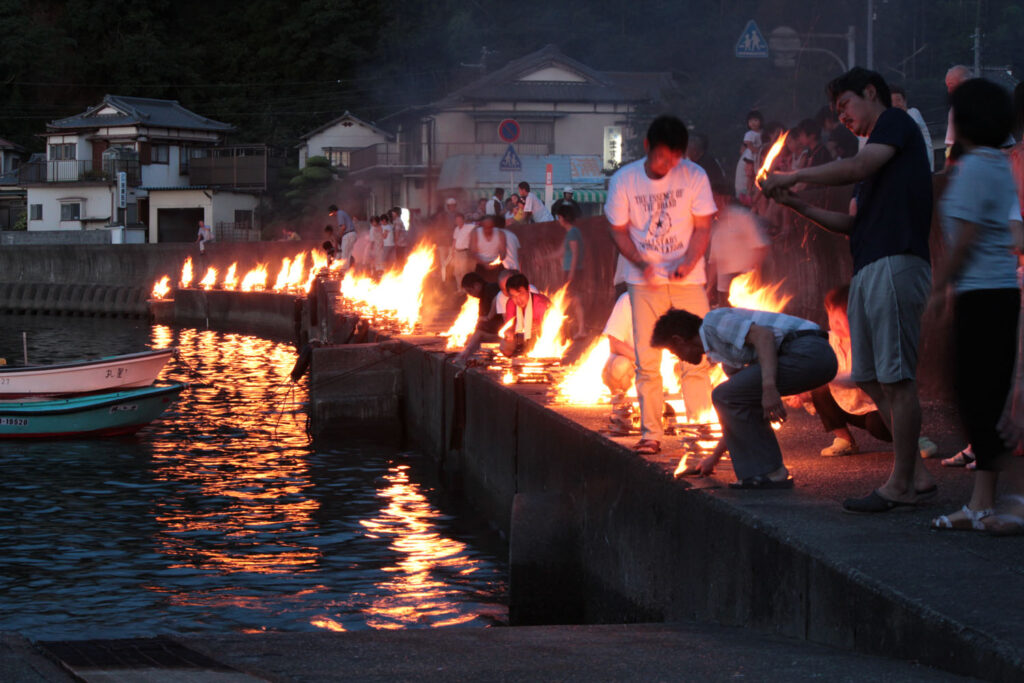
Other religions
Although the primary religions in Japan are Shinto and Buddhism, other religions also exist in Japan. Around 2 percent of the population actively practice other religions and there are many options for places of worship. Chrisitianity is the third most practiced religion in Japan, and its traditions are most commonly observed during weddings. Even if the couple is not Christian, they may decide to have a Chrisitian style wedding at a church.
I hope that this has clarified any questions about religion in Japan and the differences between Shinto and Buddhism. Japanese people have a very open view on religion, which likely comes from the influence of Shinto beliefs (worshipping many different gods). Check out my other Japanese culture content like Ojigi or Bowing in Japan: Learn the Basics! or Japanese New Years Traditions
~Tanuki






